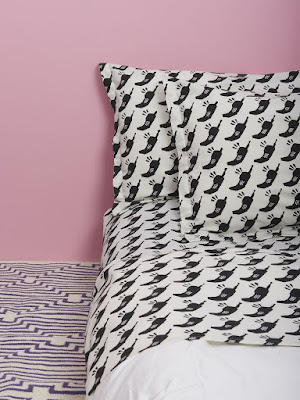I found todays talk very encouraging. Its so reassuring to hear that there are people outside of college who are looking to support and champion illustrators. It was also incredibly useful to have someone talk so honestly about what it means to be an illustrator in todays creative industries.
Promoting yourself :
website
- A website is key! It should be image led, with your contact details readily available. Preferably on the first page you should have - Emily Chaffer, Illustration, email and images. Keep it simple and direct.
- http://iwantmyname.com/ - to buy domain names
- https://cargocollective.com/ - is a good one to use to make a website
social media/blogs
- Blogs are good to have because it gives client a better understanding of your creative process and your most current work.
- Keep blogs regularly updated!
- Use your blog to feature personal projects, 'your dream briefs' - successful personal projects can lead you to get the kind of work you want.
- INSTAGRAM is great! - if your going to do it, do it well.
- Always be professional on social media
- If your lifestyle - healthy eating, country/city life etc. - is relevant and part of your 'brand' put it up there, if not don't.
- Behance and twitter are also good - use as many platforms as possible in which ppl can see your work (but again do them well, or not at all)
putting work online:
- Put low res, 72dpi images online so people are less likely to swipe your images.
- Include copyright sign, or the official note on your website.
- By putting work on instagram etc. you are licensing this work to them. Always read the terms and conditions of a website/social media platform before using it.
seeking out work :
- Meeting ppl in person - portfolio reviews (this is coming back...maybe)
- Mailers - post things to ppl. BE SELECTIVE - don't do blanket send outs.
- Know the person your sending it to - do your research. Make the work you send to them relevant, and add a personal touch.
- NEVER EVER write Sir/Madam or to whom it may concern. NAMES!
- Email (not as good, can get lost). But if your going to make it small pdf 1-3 images, with a link to your website, social media etc.
- AOI client directories
- bikinilists.com
Copyright and contracts :
using reference imagery/collage
- Using others ppl work as reference or collage only becomes a problem when you are financially benefitting from the work - selling it basically
- Its also ok for fan art etc.
- BUT, try and make something completely new - your an artist!
- For collage - go out and make your own stock photos.
- Not true - if you change x amount of times or you x% its ok.
negotiating with clients
- Illustrators do not work on day rates
- Illustrators licence (ie. lend) their work to clients, for a negotiable price.
- This price relies upon a number of different factors : who the client is, what and how they are using the illustrations and for how long.
- Clients will offer you contracts that are 100% in their favour, your job is to make them fair!
- Giving copyright assignment of your work is very rare, and not a good idea. To do this the payment needs to be in 10s of thousands.
- Moral rights (don't exist for magazines/newspapers) - Right of paternity, right of integrity. Basically its saying you should be accredited for your work and no one can tamper with your work. These can be waived... but make sure its worthit before you agree.
- Don't be scared to ask questions and to stand up for your rights.
should I get an agent?
- BE CAUTIOUS, not all agents are ethical
- Its not really necessary to get an agent
- Its best to become successful first, build a practice and then get an agent once you are more established that is ethical and will champion your work.
you are your own business
- As a freelance illustrator, you are your own business and you need to keep on top of this!
- As a creative you need to be culturally aware. You can claim back on cultural outings e.g. to the cinema, theatre, exhibitions ect.
- Use apps like zero and quickbooks to help you.
AOI membership £160.00 a year
Student membership £55.00 a year - from the day you sign up (so could do right before graduation)
You don't need to be the most confident person to deal with all of this, you just need to be savvy and aware :)













